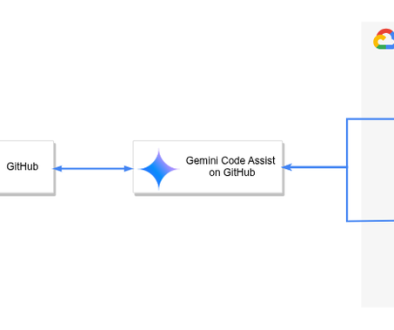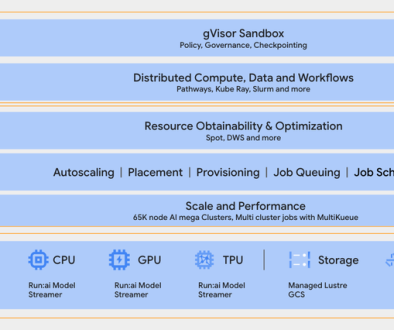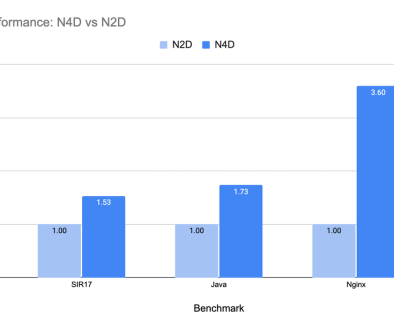GCP – Is your database holding you back? Boosting database efficiency and ROI with Cloud SQL
Editor’s Note: Today, we’re sharing insights from IDC Research Director, Devin Pratt, as he offers his analysis of recent research on Cloud SQL. In this post, you’ll see how Cloud SQL’s highly flexible, fully managed database service for MySQL, PostgreSQL, and SQL Server workloads can boost performance and cut costs, ultimately freeing your team to focus on core tasks. If you’re interested in exploring Google Cloud’s full range of database services, you can find more at our Google Cloud Databases homepage.
In today’s data-driven landscape, effectively managing databases requires solutions that tackle performance, scalability, and integration challenges. With years of experience analyzing database management systems (DBMS), I have witnessed the industry’s evolution in response to increasing demands for efficiency and innovation. This transformation is notably highlighted in IDC’s recent comprehensive Business Value White Paper, The Business Value of Cloud SQL: Google Cloud’s Relational Database Service for MySQL, PostgreSQL, and SQL Server.
The study examines the experiences of organizations that transitioned from self-managed database servers in their data centers or cloud environments to Cloud SQL. Through my analysis of the database market, I have observed how these transitions can significantly enhance an organization’s operational efficiency and reshape its cost structure. The findings align with my observations, revealing benefits such as reduced operational costs and access to advanced automation and expertise.
These results underscore the evolving nature of the database market and present valuable opportunities for businesses to optimize their operations through the strategic adoption of cloud solutions.
The challenges of modern database management
As a professional in database management, I’ve observed several key challenges facing organizations today:
-
Performance demands: Applications require faster read/write speeds to maintain responsiveness under heavy workloads.
-
Downtime issues: Maintenance tasks often disrupt operations, leading to costly interruptions.
-
Scaling limitations: Technical constraints can hinder database growth and adaptability.
-
Complex disaster recovery: Executing reliable recovery processes remains difficult and risky.
-
AI integration complexity: Incorporating AI typically requires external tools, adding layers of intricacy.
-
Resource-intensive management: A DBMS requires expertise and significant investment in maintenance, upgrades, and system resources, often straining IT budgets.
Addressing these issues is crucial for innovation and cost-efficiency in our increasingly data-driven world.
IDC’s Business Value White Paper found that organizations using Cloud SQL have achieved an impressive average three-year ROI of 246%, with a rapid 11-month payback period. Study participants attributed this high return to several factors, including:
-
Increased operational efficiency: Database administrators and infrastructure teams can focus on strategic and innovative tasks rather than routine maintenance.
-
Cost reduction: Organizations benefit from lower overall database operational costs, including reduced infrastructure and database expenses.
-
Enhanced agility: Faster deployment and scaling of database resources enable businesses to better support development activities and adapt to changing needs.
-
Business growth: Organizations are winning more business by delivering faster, higher-quality products and services, improving application performance, and user experiences.
Further advancements in database management
Since the publication of the IDC study, Google Cloud has enhanced Cloud SQL in two key areas: price performance and generative AI capabilities.
First, Enterprise Plus edition now provides businesses with an available and reliable database solution in addition to the core service. This includes increased read throughput and improved write latency, enhanced scalability with tenfold expanded table support, greater efficiency through near-zero planned downtime with rolling updates for both scaling up and down, and improved disaster recovery capabilities via enhanced failover processes and testing.
Second, Cloud SQL provides a comprehensive set of generative AI tools and capabilities. This includes pgvector support in PostgreSQL and native vector support in MySQL for efficient vector similarity search, alongside streamlined connectivity to Vertex AI, LangChain, and various foundation models through extensions. This enables direct AI application development within the database.
Conclusion
The IDC Business Value White Paper on Cloud SQL provides data that aligns with many of my observations regarding cloud-based database solutions, highlighting several key areas of improvement:
-
44% increase in DBA efficiency
-
28% lower three-year cost of operations
-
96% faster creation and deployment of new databases
-
An average annual revenue increase of $21.75 million per organization
These results suggest that managed database services like Cloud SQL may offer significant benefits in operational efficiency, cost reduction, and potential revenue growth.
For those interested in a more comprehensive analysis of these findings and their potential implications, I recommend reviewing the full IDC Business Value White Paper, “The Business Value of Cloud SQL: Google Cloud’s Relational Database Service for MySQL, PostgreSQL, and SQL Server,” sponsored by Google Cloud.
Read More for the details.




